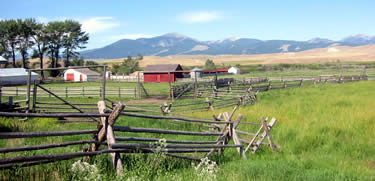|
Toretocnemus Zitteli
''Toretocnemus'' is an extinct genus of ichthyosaur. Its remains have been found in California, United States, in Triassic layers of the Carnian Hosselkus Limestone. History of research The specimen that would eventually be cataloged as UCMP 8100 was found along the Pit River in Shasta County, California, by Annie Montague Alexander. While much of the specimen had been lost to erosion, many elements were still preserved, namely some skull fragments, around 30 vertebrae, including some dorsal (trunk) vertebrae, but being mostly represented by frontwards caudal (tail) vertebrae, a large number of ribs, the pelvis, the right forelimb, and both the left and right hindlimbs. Another specimen, UCMP 8099, was also found by Alexander in Shasta County. This one was uncovered on a ranch and consists of a partial skull, various incomplete vertebrae, poorly-preserved ribs, gastralia (belly ribs), the shoulder girdle, forelimbs, and a partial hindlimb. Both of these specimens ca ... [...More Info...] [...Related Items...] OR: [Wikipedia] [Google] [Baidu] |
John Campbell Merriam
John Campbell Merriam (October 20, 1869 – October 30, 1945) was an American paleontologist, educator, and conservationist. The first vertebrate paleontologist on the West Coast of the United States, he is best known for his taxonomy of vertebrate fossils at the La Brea Tar Pits in Los Angeles, particularly with the genus ''Smilodon'', more commonly known as the sabertooth cat. He is also known for his work to extend the reach of the National Park Service. Biography He was born in Hopkinton, Iowa, the eldest child of postmaster, store proprietor, and American Civil War veteran Charles E. Merriam. His middle name Campbell was his mother's middle name, and the maiden name of his maternal grandmother. Both his father Charles E. Merriam and his paternal uncle Henry C. Merriam had served as officers in the 12th Iowa Infantry, Company K; after capture at the Battle of Shiloh, they were sent to Libby Prison for some time before being returned to the battlefields. Eventually, w ... [...More Info...] [...Related Items...] OR: [Wikipedia] [Google] [Baidu] |
Ranch
A ranch (from es, rancho/Mexican Spanish) is an area of land, including various structures, given primarily to ranching, the practice of raising grazing livestock such as cattle and sheep. It is a subtype of a farm. These terms are most often applied to livestock-raising operations in Mexico, the Western United States and Western Canada, though there are ranches in other areas.For terminologies in Australia and New Zealand, see Station (Australian agriculture) and Station (New Zealand agriculture). People who own or operate a ranch are called ranchers, cattlemen, or stockgrowers. Ranching is also a method used to raise less common livestock such as horses, elk, American bison, ostrich, emu, and alpaca.Holechek, J.L., Geli, H.M., Cibils, A.F. and Sawalhah, M.N., 2020. Climate Change, Rangelands, and Sustainability of Ranching in the Western United States. ''Sustainability'', ''12''(12), p.4942. Ranches generally consist of large areas, but may be of nearly any size. In t ... [...More Info...] [...Related Items...] OR: [Wikipedia] [Google] [Baidu] |
Mexico
Mexico ( Spanish: México), officially the United Mexican States, is a country in the southern portion of North America. It is bordered to the north by the United States; to the south and west by the Pacific Ocean; to the southeast by Guatemala, Belize, and the Caribbean Sea; and to the east by the Gulf of Mexico. Mexico covers ,Mexico '' The World Factbook''. . making it the world's 13th-largest country by area; with approximately 12 ... [...More Info...] [...Related Items...] OR: [Wikipedia] [Google] [Baidu] |
Sonora
Sonora (), officially Estado Libre y Soberano de Sonora ( en, Free and Sovereign State of Sonora), is one of the 31 states which, along with Mexico City, comprise the Federal Entities of Mexico. The state is divided into 72 municipalities; the capital (and largest) city of which being Hermosillo, located in the center of the state. Other large cities include Ciudad Obregón, Nogales (on the Mexico-United States border), San Luis Río Colorado, and Navojoa. Sonora is bordered by the states of Chihuahua to the east, Baja California to the northwest and Sinaloa to the south. To the north, it shares the U.S.–Mexico border primarily with the state of Arizona with a small length with New Mexico, and on the west has a significant share of the coastline of the Gulf of California. Sonora's natural geography is divided into three parts: the Sierra Madre Occidental in the east of the state; plains and rolling hills in the center; and the coast on the Gulf of California. It is ... [...More Info...] [...Related Items...] OR: [Wikipedia] [Google] [Baidu] |
Antimonio Formation
The Antimonio Formation is a geologic formation in Mexico. It preserves fossils dating back to the Jurassic The Jurassic ( ) is a Geological period, geologic period and System (stratigraphy), stratigraphic system that spanned from the end of the Triassic Period million years ago (Mya) to the beginning of the Cretaceous Period, approximately Mya. The J ... period. See also * List of fossiliferous stratigraphic units in Mexico References * Jurassic Mexico {{Jurassic-stub ... [...More Info...] [...Related Items...] OR: [Wikipedia] [Google] [Baidu] |
Vertebra
The spinal column, a defining synapomorphy shared by nearly all vertebrates, Hagfish are believed to have secondarily lost their spinal column is a moderately flexible series of vertebrae (singular vertebra), each constituting a characteristic irregular bone whose complex structure is composed primarily of bone, and secondarily of hyaline cartilage. They show variation in the proportion contributed by these two tissue types; such variations correlate on one hand with the cerebral/caudal rank (i.e., location within the backbone), and on the other with phylogenetic differences among the vertebrate taxa. The basic configuration of a vertebra varies, but the bone is its ''body'', with the central part of the body constituting the ''centrum''. The upper (closer to) and lower (further from), respectively, the cranium and its central nervous system surfaces of the vertebra body support attachment to the intervertebral discs. The posterior part of a vertebra forms a vertebral ... [...More Info...] [...Related Items...] OR: [Wikipedia] [Google] [Baidu] |
Fossil Preparation
Fossil preparation is the act of preparing fossil specimens for use in paleontological research or for exhibition, and involves removing the surrounding rocky matrix and cleaning the fossil. Techniques Acid maceration Acid maceration is a technique to extract organic microfossils from a surrounding rock matrix using acid. Hydrochloric acid or acetic acid may be used to extract phosphatic fossils, such as the small shelly fossils, from a carbonate matrix. Hydrofluoric acid is also used in acid macerations to extract organic fossils from silicate rocks. Fossiliferous rock may be immersed directly into the acid, or a cellulose nitrate film may be applied ( dissolved in amyl acetate), which adheres to the organic component and allows the rock to be dissolved around it. Film pull The film pull technique is a means of recovering carbonaceous compression fossils for study under transmitted light microscopy. An acid is applied to the surface of the rock to etch away the matrix fro ... [...More Info...] [...Related Items...] OR: [Wikipedia] [Google] [Baidu] |
George Albert Boulenger
George Albert Boulenger (19 October 1858 – 23 November 1937) was a Belgian-British zoologist who described and gave scientific names to over 2,000 new animal species, chiefly fish, reptiles, and amphibians. Boulenger was also an active botanist during the last 30 years of his life, especially in the study of roses. Life Boulenger was born in Brussels, Belgium, the only son of Gustave Boulenger, a Belgian public notary, and Juliette Piérart, from Valenciennes. He graduated in 1876 from the Free University of Brussels with a degree in natural sciences, and worked for a while at the Royal Belgian Institute of Natural Sciences, Brussels, as an assistant naturalist studying amphibians, reptiles, and fishes. He also made frequent visits during this time to the '' Muséum national d'Histoire naturelle'' in Paris and the British Museum in London. In 1880, he was invited to work at the Natural History Museum, then a department of the British Museum, by Dr. Albert C. L. G. Gün ... [...More Info...] [...Related Items...] OR: [Wikipedia] [Google] [Baidu] |
Holotype
A holotype is a single physical example (or illustration) of an organism, known to have been used when the species (or lower-ranked taxon) was formally described. It is either the single such physical example (or illustration) or one of several examples, but explicitly designated as the holotype. Under the International Code of Zoological Nomenclature (ICZN), a holotype is one of several kinds of name-bearing types. In the International Code of Nomenclature for algae, fungi, and plants (ICN) and ICZN, the definitions of types are similar in intent but not identical in terminology or underlying concept. For example, the holotype for the butterfly '' Plebejus idas longinus'' is a preserved specimen of that subspecies, held by the Museum of Comparative Zoology at Harvard University. In botany, an isotype is a duplicate of the holotype, where holotype and isotypes are often pieces from the same individual plant or samples from the same gathering. A holotype is not necessaril ... [...More Info...] [...Related Items...] OR: [Wikipedia] [Google] [Baidu] |
University Of California
The University of California (UC) is a public land-grant research university system in the U.S. state of California. The system is composed of the campuses at Berkeley, Davis, Irvine, Los Angeles, Merced, Riverside, San Diego, San Francisco, Santa Barbara, and Santa Cruz, along with numerous research centers and academic abroad centers. The system is the state's land-grant university. Major publications generally rank most UC campuses as being among the best universities in the world. Six of the campuses, Berkeley, Davis, Irvine, Los Angeles, Santa Barbara, and San Diego are considered Public Ivies, making California the state with the most universities in the nation to hold the title. UC campuses have large numbers of distinguished faculty in almost every academic discipline, with UC faculty and researchers having won 71 Nobel Prizes as of 2021. The University of California currently has 10 campuses, a combined student body of 285,862 students, 24,400 faculty ... [...More Info...] [...Related Items...] OR: [Wikipedia] [Google] [Baidu] |
Trachyceras
''Trachyceras'' is a genus belonging to the extinct subclass of cephalopods known as ammonites. Specifically it belongs in the order Ceratitida. They are distributed in Afghanistan, Bosnia and Herzegovina, Canada, China, Germany, Hungary, India, Indonesia, Italy, the Russian Federation, Slovenia, United States. The family to which ''Trachyceras'' belongs, the Trachyceratidae The Trachyceratidae is an extinct family of ceratitid ammonoid cephalopods. The Trachyceratidae makes up part of the superfamily Trachyceratoidea along with such families as the Buchitidae, Distichitidae, Dronovitidae and Noridiscitidae. ..., has more or less involute, highly ornamented shells and ceratitic to ammonitic sutures. References ;Notes ;Bibliography * Trachyceratidae Triassic ammonites Carnian genera Fossils of British Columbia Fossils of China Fossils of Italy Fossils of Germany Fossils of India Molluscs described in 1869 Prehistoric cephalopod genera {{Ceratiti ... [...More Info...] [...Related Items...] OR: [Wikipedia] [Google] [Baidu] |



